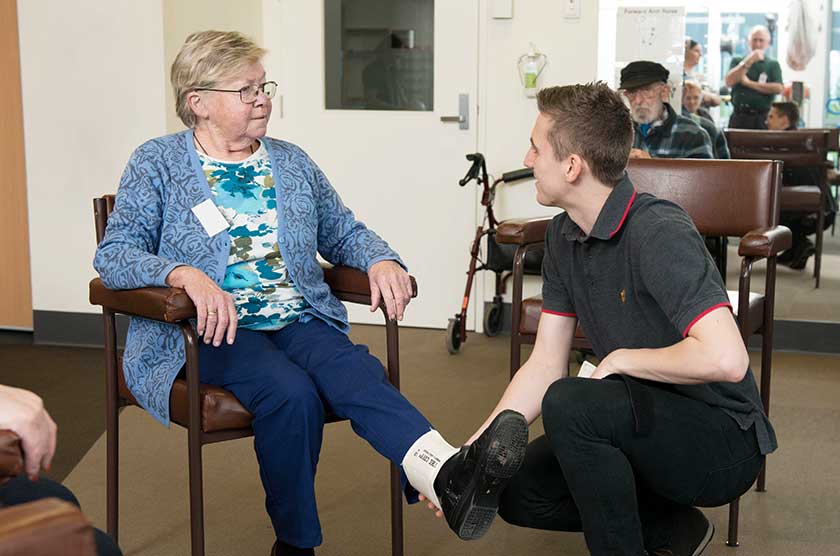If you believe you have an ankle injury the first step is to stop what you are doing, apply an ice pack, and elevate your ankle. If you are experiencing pain, a mild anti-inflammatory may also help.
Doing this should relieve the pain and swelling. If not, you need to visit your doctor who can investigate further and if necessary, send you for an X-ray.
What happens if I have a sprain?
Sprains are usually categorised as minor, moderate or severe.
- A minor sprain will require elevation and ice to be applied to the area, but the swelling should subside quickly with rest and you can bear weight on the ankle when you feel ready.
- A moderate sprain, where the ligaments have been bruised, stretched or where you have a minimal tear may require you to keep the limb immobilised while it is healing. In this case, you wear a moon boot or brace and you may need to use crutches until your ankle has healed.
- If you have a severe sprain where the ligaments have separated from the bone, surgery is required for a full recovery and your doctor will refer you to an orthopaedic surgeon for further treatment. Physiotherapy may be needed after you have recovered to allow you the full range of movement you had.
If you prefer not to have surgery, it is possible to regain some stability by strengthening the other muscles surrounding the joint with exercise. However, this won’t return your ankle to its original stability and you may be at risk of further injury.
Sometimes further imaging such as MRI may be needed to assess the level of damage that has occurred. Occasionally this might show a minor fracture along with or instead of a sprain.
What happens if I have a fracture?
If the X-ray shows that you have a simple fracture and everything is still properly aligned, your doctor can set your ankle and foot in a brace or cast.
This allows the fracture to heal while keeping the joint from moving. It takes up to six weeks, during which you may not be able to bear weight on the ankle.
For a more complicated fracture where the bones have broken awkwardly or there are multiple fractures, you may require surgery. If this is the case, your doctor will refer you to an orthopaedic surgeon.
After conducting an examination of their own, the surgeon will recommend a course of action.
The most common surgical repair of a fractured ankle is to insert metal pins or a plate to repair the joint. This is done under general anaesthetic and will require five to 10 days in hospital post-surgery.
Your foot and ankle are in a cast after surgery to allow it to heal correctly and you may require physiotherapy once your cast has been removed.
Seeing an orthopaedic surgeon
If you do break your ankle it is always wise to speak to your doctor about your options.
While they may not initially recommend you see an orthopaedic surgeon, if your injury is not healing well or you need to get back on your feet in a short time frame, surgery may your best option.
You can find an orthopaedic surgeon on our website’s Find a specialist search.
Any surgical procedure carries risks. Make sure you discuss all possible risks with an appropriately qualified health practitioner.










